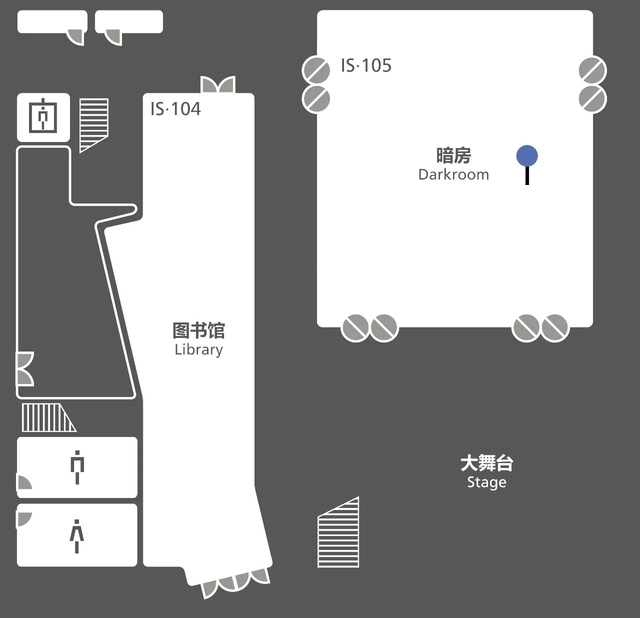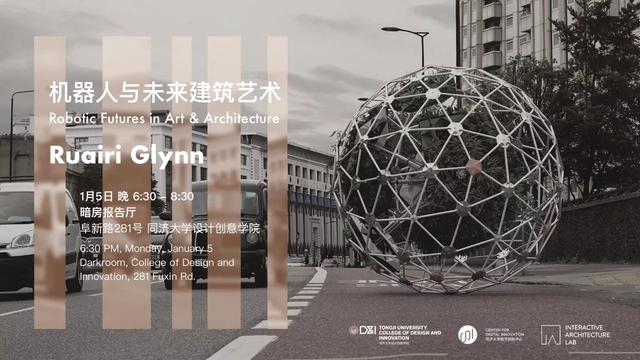
Time
6:30 PM, Friday, January 5.
Venue
Darkroom, College of Design and Innovation, 281 Fuxin Rd.
The Speaker
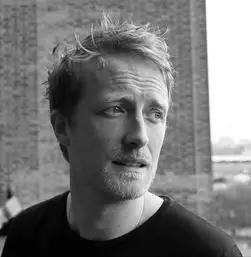
Ruairi Glynn
Ruairi Glynn is Director of the Interactive Architecture Lab at the Bartlett School of Architecture, UCL. Alongside his teaching and research, he practices as an Installation Artist recently exhibiting at the Centre Pompidou Paris, National Art Museum of China Beijing and Tate Modern London. His interactive installations reflect on rapid developments in robotics, material science and computational technologies examining the emerging aesthetics of behavior permeating across art, architecture, and design. He has worked with cultural and research institutions including the Royal Academy of Arts, the Medical Research Council and BBC and built public works for Twitter, Nike, Arup, Buro Happold, and Bank of America Merrill Lynch. He has co-authored two books ‘Digital Architecture, Passages Through Hinterlands’ & ‘Fabricate, Making Digital Architecture’ in parallel to curating over a dozen international conferences, competitions, and exhibitions. He’s taught internationally including ETH, Zurich, TU, Delft, The Royal Danish Academy of Fine Arts, Denmark & the Angewandte, Vienna.
www.ruairiglynn.co.uk
www.interactivearchitecture.org
Talk Abstract
We are seeing rapid progress in robotics, promising driverless cars, autonomous flying vehicles, and seemingly endless other forms of intelligent kinetics to soon co-habit our built environment. What role does Architecture & the Arts have in shaping this future when the development of these technologies rarely incorporates their expertise?
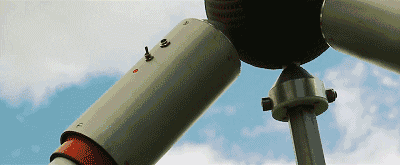
ROBOTIC PERFORMANCE
I would like to acknowledge the historical context of architects and artists in the development of robotics looking back to the making of mechanical automaton, and performative machines. Today Robotics in Architecture and Arts has been primarily focused on manufacturing, and I have been involved since 2011 chairing the Fabricate Conference www.fabricate.org examining the transformational role of digital fabrication. But there is another side to the story of machines that deals with their performative potential and this is something I am particularly interested in with my own arts practiceand in directing the Masters - M.Arch Design for Performance & Interactionat the Bartlett, University College London.
www.interactive architecture.org/dfpi
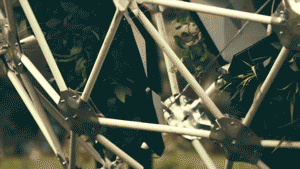
AESTHETICS
Robots have no concept of pain, or pleasure. Aesthetic experience is solely the property of the conscious. Yet robots, whether through their own agency, or a human tele-operated agency are full of personality. With even the subtlest of intentional movements machines become life, and with careful manipulation, complex and compelling performances emerge. There is of course a precursor to the tele-operated robot, the puppet. I have worked closely with puppeteers over the past decade exploring how we perceive the behaviour of machines and also getting to understand the intimate embodied relationship between puppeteer and puppet. I suggest Robotics research often seems to miss a deeper understanding of visceral aesthetic experience of robots because it comes from the irrational, instinctual and behavioural roots of human experience. My installations at the Pompidou and the Tate Modern examine these ideas. I will conclude that puppetry and robotic arts have an important contribution to make to the wider field of robotics.
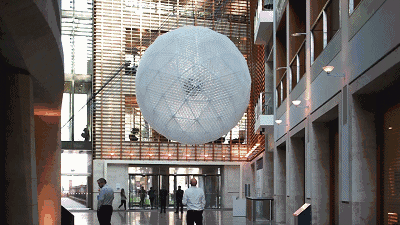
EXPERIMENTS IN ROBOTICS BETWEEN ART & ARCHITECTURE
Finally I would like to share the work of the Interactive Architecture Lab at University College London where researchers and students have been working on sensory, responsive and robotic systems since 2012. Work in the Lab ranges from wearable prosthetic devices and virtual reality worlds, to experimental robotics and interactive public art installations.
www.interactive architecture.org
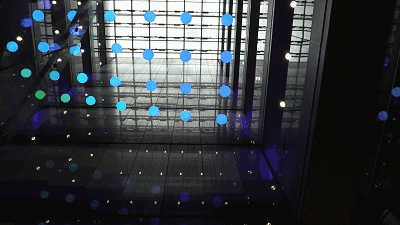
Direction
